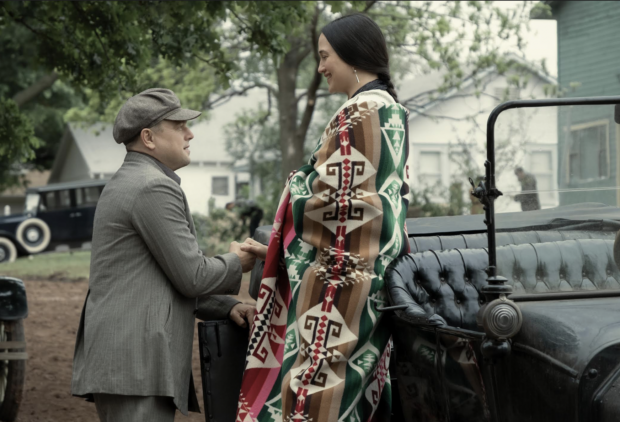
Leonardo Di Caprio and Lily Gladstone deliver acting fireworks as Ernest and Mollie Burkhart. PHOTO CREDIT: PARAMOUNT PICTURES PH
“Killers of the Flower Moon” is the harrowing investigative account of journalist David Grann on the series of murders of Osage people in the 1920s. The acclaimed true crime nonfiction earned praise for its masterful chronicling of one of the darkest chapters in the United States.
Four years ago, the inevitable big screen adaptation was announced with Martin Scorsese attached as director, writer, and producer. Expectations skyrocketed as his signature actors, Leonardo DiCaprio and Robert De Niro, were announced as cast members. “Killers of the Flower Moon,” the Western crime from Scorsese, is a brilliant meditation on the original sin of a nation struggling to move out of the frontier and into the modern era.
The members of the Osage Nation were the wealthiest people per capita in the world after the discovery of oil deposits in their tribal lands in Oklahoma. Each member earned a headright—that used to be non-transferrable to non-tribal citizens—and entitled them a quarterly share of the Osage Mineral Estate. Soon, the reign of terror began as a series of murders targeting affluent and able-bodied tribal members, terrorized the peaceful and prosperous lives of the Osage Nation.
Lily Gladstone towers as the tragic force at the center of the story. Leonardo Di Caprio and Lily Gladstone deliver acting fireworks as Ernest and Mollie Burkhart. PHOTO CREDIT: PARAMOUNT PICTURES PH
Like in his previous projects, Scorsese turned to his frequent collaborators. Rodrigo Prieto served as cinematographer; and the late Robbie Robertson scored the film. The original score features generous percussions and a harmonica performance from Frederic Yonnet.
Veteran screenwriter Eric Roth marked his first professional relationship with the director and came up with a riveting dissection of a nation founded on colonization, capitalism, racial tension, and the patriarchal structure, as seen through the murders of the Osage people.
DiCaprio and De Niro are both outstanding as the irredeemable Burkharts. But the heart and soul of the film is the haunting performance of Lily Gladstone. Her heartbreaking screen presence is an emotional mosaic of endless pain.
One of the more poignant scenes feature citizens of the Osage Nation watching a newsreel of the horrific Tulsa Riots that decimated the flourishing Black commercial district in Oklahoma, that happened at the same time as the reign of terror in Osage. The parallels are undeniable: despite their economic standing, people of color were killed because white people see them as less than humans.
The intention of the film is unmistakable. Scorsese’s latest masterpiece is an unflinching look at the bottomless pit of human greed and forces the audience to confront the horrors of colonization and capitalism. There are zero “good white people” in the film to which racism and genocide apologists can seek comfort. “Killers of the Flower Moon” is as courageous and essential as it is epic. EDV

